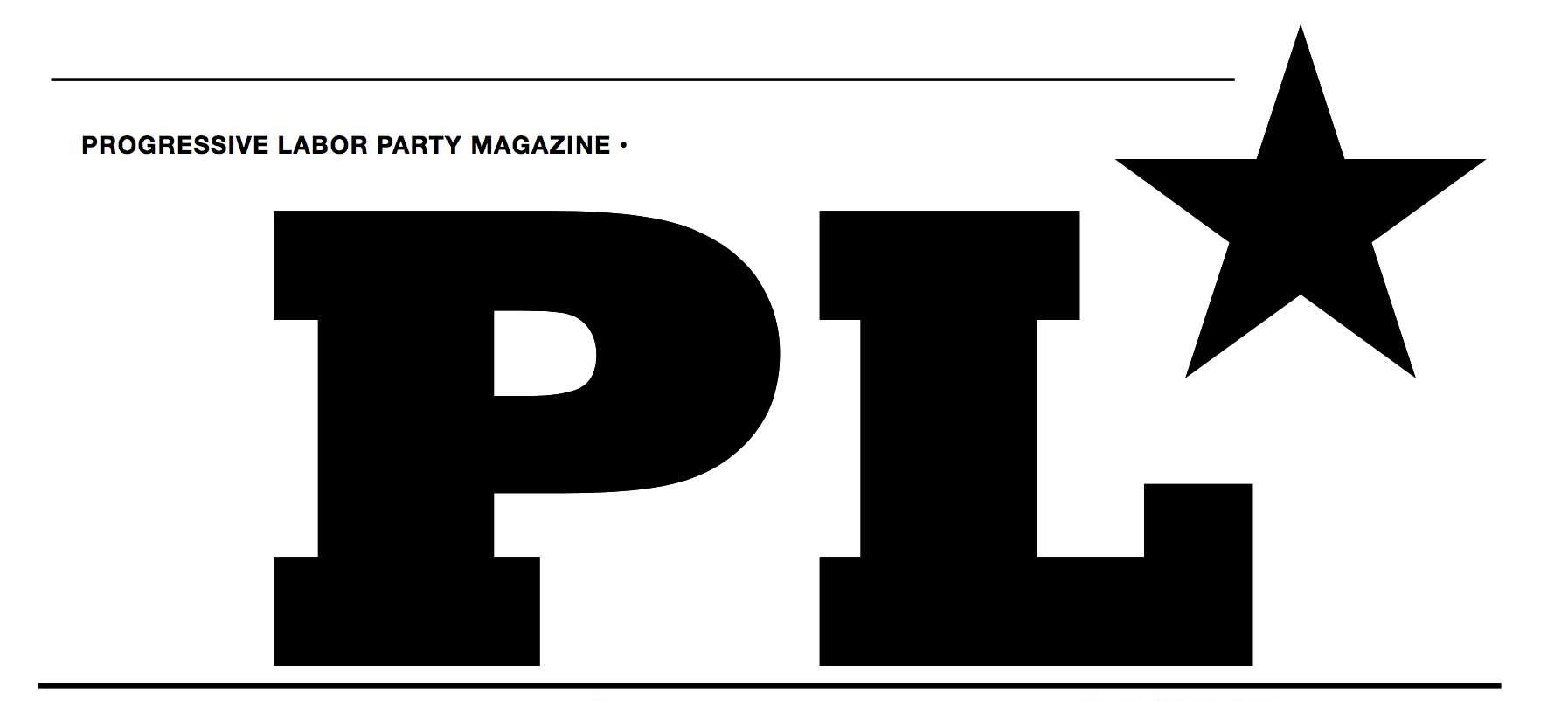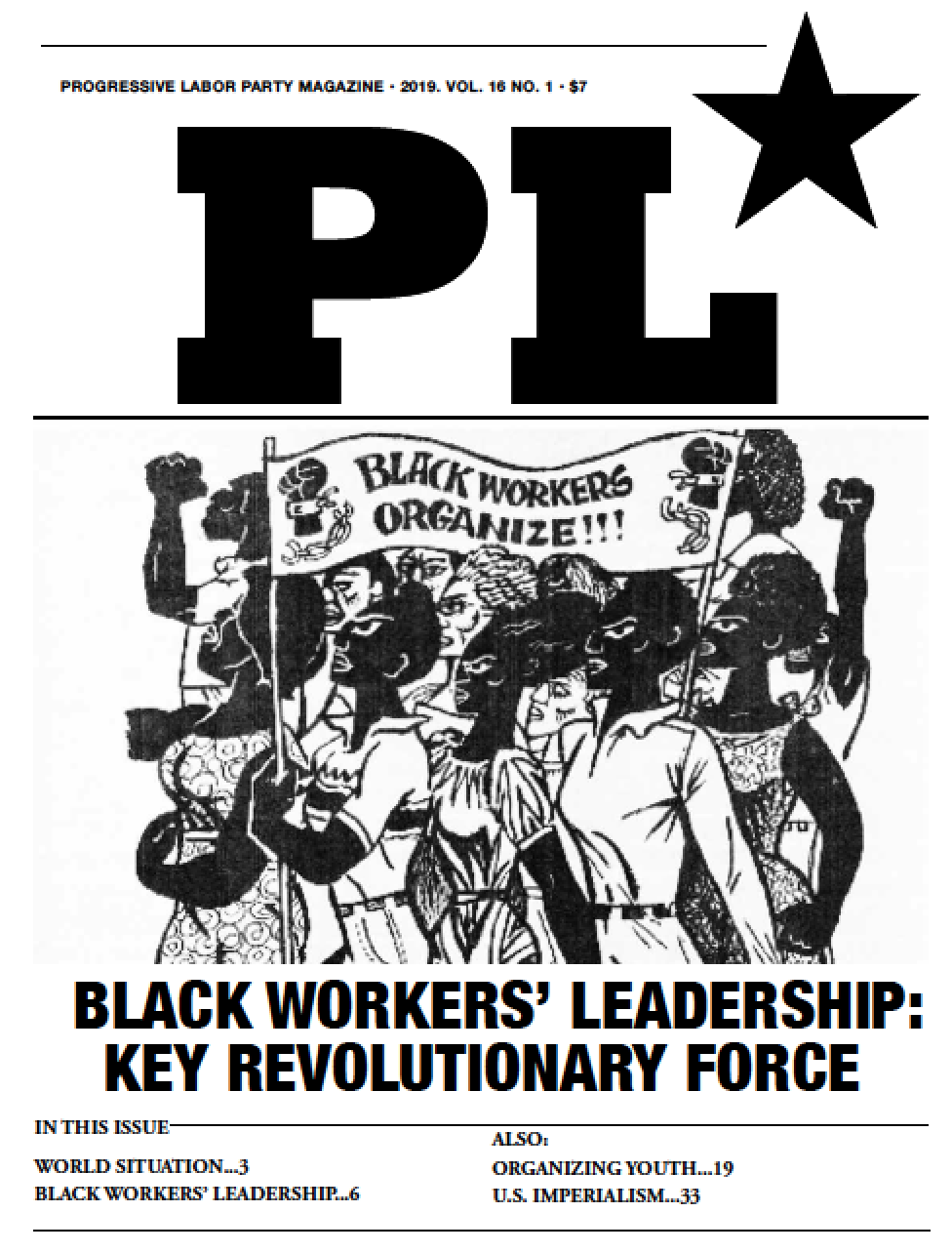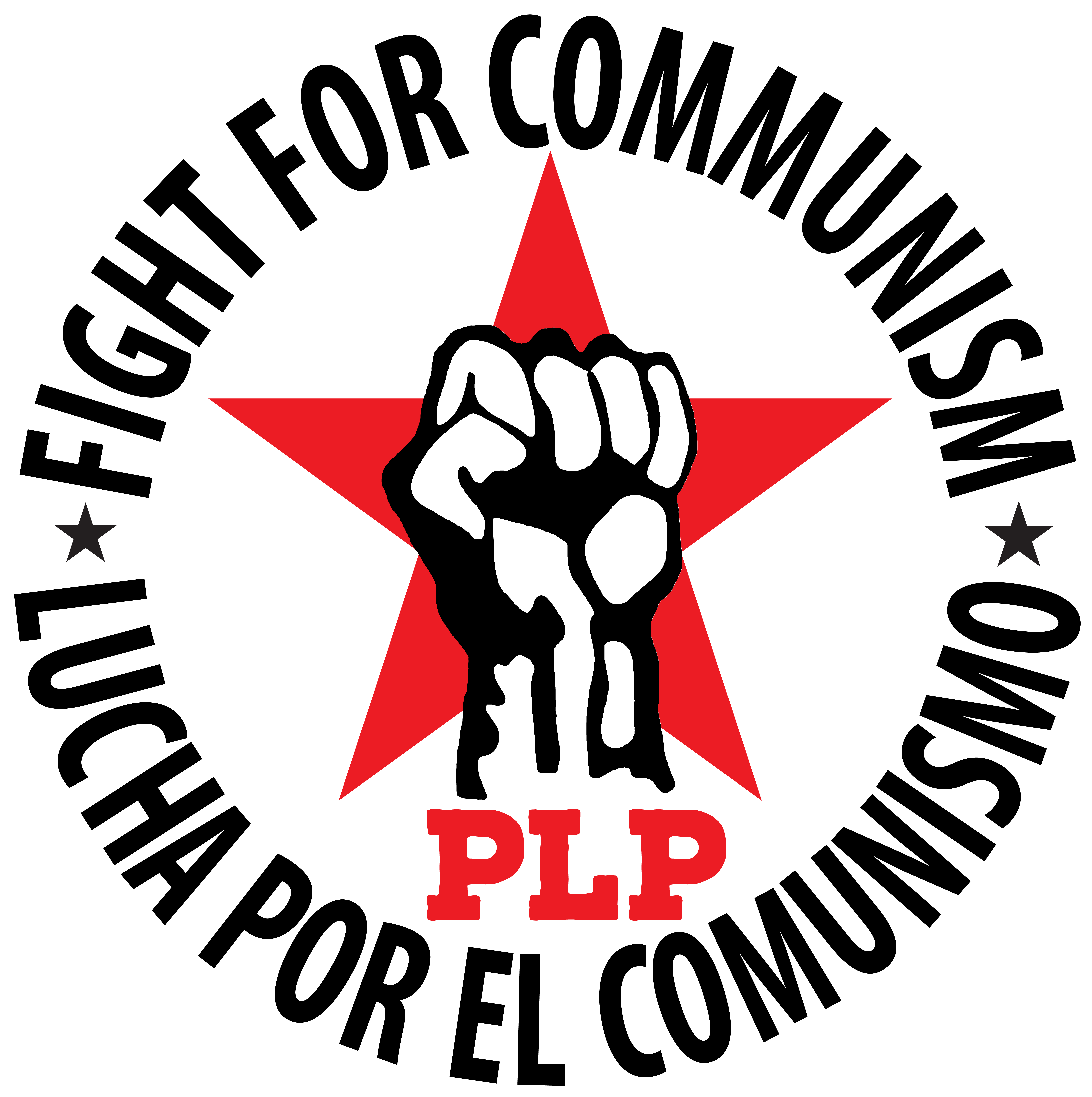Book Review: What communism in China achieved in public health
 Saturday, June 27, 2020 at 12:04PM
Saturday, June 27, 2020 at 12:04PM For a shorter version, see CHALLENGE pdf issue (7/8/20) http://www.plp.org/storage/challenge-archives/2020/C070820-WEB.pdf
A Review of Away with all Pests: An English Surgeon in People's China Dr. Joshua S. Horn 1954-1969. (London: 1969.)
In March of this year, CNN reported this about the connection between America’s awful health record regarding the Covid-19 pandemic: “The US is the only developed nation without universal health care. Nearly 28 million non-elderly Americans, or 10.4%, were uninsured in 2018, according to the most recent Census Bureau data available. This is an improvement from what it was before the Affordable Care Act was passed in 2010. That year, 46.5 million non-elderly people -- or 17.8% -- lacked coverage. But the uninsured rate has started ticking up again over the past two years. The uninsured largely depend on a patchwork of community clinics and hospital emergency rooms for care. This means they often wait until their conditions become serious before seeking medical help -- which could lead to their infecting many others during viral outbreaks like coronavirus. ‘Addressing coronavirus with tens of millions of people without health insurance or with inadequate insurance will be a uniquely American challenge among developed countries,’ tweeted Larry Levitt, executive vice president for health policy at Kaiser. ‘It will take money to treat people and address uncompensated care absorbed by providers.’" In other words, a run-for-profit healthcare system—the way capitalism runs everything from public health, housing, the prison system, and education—guarantees that the well-being of the vast majority of Americans, let alone undocumented workers (10.5 to 12 million), inmates (2.3 million, more people per capita than any other nation), and the homeless (as many as 3.5 million Americans are homeless, according to the Department of Housing and Urban Development), will be defenseless when they get ill. It is instructive, therefore, to see how communism in China in the 1950s and early 1960s—one of the world’s poorest countries when it declared its independence in October, 1949, addressed its own terrible epidemics and its nearly non-existent healthcare system. One startling fact is that between the time the Communist Party took control in 1949 and 1975, life expectancy in China more than doubled, from about 28 to 65 years. By the early 1970s, infant mortality rates in Shanghai were lower than in New York City. Away with All Pests (1969) by Doctor Joshua Horn is a perfect place to start to understand how politics, an economic system, and a philosophic commitment to (or a disregard for) the public good determine the well being of people. “In 1954, we [my family and I] uprooted ourselves and went to China. Apart from a few home visits we have lived in China ever since. I will not go into the numerous reasons behind our decision to go to China ■ Foremost among them was the political reason. I had glimpsed the old China I knew that in 1949 the Communist armies had finally liberated the whole mainland and that now the Chinese people were engaged in the construction of the modern Socialist state on the ruins of one that was colonial. I was on China’s side. I ardently wished to contribute what little skill I had to an heroic undertaking which would change the face of China and of the world.” “Poverty and ignorance were reflected in a complete lack of sanitation as a result of which fly and water-borne diseases such as typhoid, cholera, dysentery, took a heavy toll. Worm infestation was practically universal, for untreated people lived on the fringe of starvation and this so lowered their resistance to disease that epidemics carried off thousands every year. The average life expectancy in China was stated to be about twenty-eight years. Reliable health statistics for pre-Liberation China are hard to come by but conservative estimates put the crude death rate in time of peace at between thirty and forty per thousand and the infantile mortality rate at between 160 and 170 per thousand live births. The plight of the women and children was bad beyond description. The men had to have what grain there was, to give them strength to work in the fields. The women, especially those who stayed at home to look after the children, ate only thin gruel, grass and leaves. They were so ill-nourished that by the time they reached middle age, they were toothless and decrepit. Many adolescent girls, lacking calcium and vitamin D, developed softening and narrowing of the pelvic bones, so that normal childbirth became either impossible or so dangerous that six to eight per cent of all deaths among women were due to childbirth. Babies were breast-fed for three or four years, and also resulted in child malnutrition and such vitamin deficiency diseases as rickets and scurvy. There were no preventive inoculations against infectious diseases, and from time to time epidemics of smallpox, diphtheria, whooping cough and meningitis swept through the countryside with devastating results. Lice and poverty went hand in hand, and with them louse-borne diseases such as typhus fever. Military occupation and the licentiousness of the landlords and local gentry spread venereal diseases among the people and no treatment was available. The prevalence of tuberculosis can be gaged from the fact that in 1946 sixty per cent of all applicants for student visas for study abroad were found to be suffering from this disease.” The Communist revolution had been victorious in 1948, and one of its principal tasks was providing healthcare, once reserved only for the wealthy, to China’s poor, especially in the countryside. Before 1948 the vast majority of those living in China’s countryside, almost a quarter of the world’s population, lacked access to any healthcare at all. Bringing healthcare to almost a quarter of the world’s population was one of the great achievements of Chinese communism. Millions of Chinese workers and peasants gained access to healthcare. Life expectancy was doubled. Infant mortality greatly reduced. So how did the Communist Party of China build from scratch a public health system to eradicate these epidemics that more than rivalled in lethality our current coronavirus pandemic? The starting point of this herculean effort was to mobilize thousands of ordinary people, together with medical personnel, to go into the countryside-- where 80% of the total population lived-- to provide health-care education, prevention, and treatment to millions of peasants and workers. It was necessary to minimize the social gap between the destitute peasants in the countryside and the relatively better off workers and educated in towns and cities. One way that this was accomplished was through the health teams. To break down the distinction between town and countryside, and as part of the effort to bring care to the sick, mobile medical teams were organized and sent to the countryside. At the onset of the Cultural Revolution in 1966, Horn reported that one third of the hospital staff at his Beijing hospital was stationed in the countryside as part of a team on a rotation basis. Mobile teams were sent out to the poorest areas. The doctors and other health providers sought out the patients, not the other way around. The team that Horn referred to was made up of 80,000 people who worked among twelve people’s communes in the countryside. These teams were divided into smaller brigades which maintained health clinics. Doctors and medical personnel were sent out from these clinics into the local areas and remote villages to administer healthcare. Different kinds of groups were sent where they were needed most. Some focused on dental and birth control. Others that specialized in one disease were sent to areas affected by that affliction, including very remote areas, sometimes travelling on foot or by riding donkeys. A distinctive feature of how the Chinese communists delivered medical care was that the medical personnel usually either lived together in peasant cottages or they lived with the peasants in their homes in the villages. Healthcare was no longer a luxury afforded only by the wealthy. Doctors and their patients lived and worked side by side. These health care providers came to be called “barefoot doctors.” Young people who were motivated by this new infusion of public-oriented, cooperative spirit, were given a kind of abbreviated training in basic medicine, training in the most common ailments and diseases encountered in the countryside. Periodically, they would return for greater formal medical training. Mobil teams also trained sanitary workers and midwives to be sent to the rural community. The intention was not merely to impart medical knowledge to young people, but to promote the communist ideology of egalitarianism, in which rural health workers would retain close links with the peasants and who would remain permanently in the countryside. Overall, the barefoot doctor movement was an example of the Chinese Communist Party’s belief that collectively people, not extravagant personal wealth, are the most important resource in determining a nation’s wellbeing. Horn witnessed the success of this approach first hand. Concretely, this trust in the potential of working people was demonstrated by the campaign against schistosomiasis or “snail fever.” At the time that Horn was writing, it affected 250 million people, almost all in the poorest countries. As late as 1955, there were 50 million victims in China alone. Remarkably, in China, which was still dominated by communist politics in the 1950s and 60s, snail fever was all but eliminated. The Communists claimed an 85% to 95% cure rate among afflicted people. The disease was all but wiped out in areas that had been previously afflicted on an epidemic scale. The Communist Party declared, wrote Dr. Horn, that it could “cure what the powers above [probably the European imperial powers] have failed to do.” How was this done? To mobilize the peasantry against the snails, medical workers explain the nature of the illness which has plagued them for so long with lectures, films, posters, and radio-talks. When the peasants came to understand the nature of the disease, they worked out methods to eradicate it. Twice a year, in March and August, the entire population in county after county, supplemented by soldiers of the People’s Liberation Army, students, teachers and office workers, drained the rivers and ditches, dug away and buried their banks. Here is an excerpt from the book where Horn describes in details how doctors and other medical workers connected their lives with that of the peasants whom they served in combating schistosomiasis and other health issues: “At least once a week, and more often during the busy farming seasons, the medical workers join the peasants in manual labour in the fields. The usual period of service with the mobile team is one year, all its members are volunteers and a balance is maintained between new graduates and experienced doctors and between the different specialities. Whatever their original speciality, while they are in the countryside, doctors are expected to undertake any kind of medical work. To equip them for their new life and new work, they receive a preparatory course of training before leaving the city. They get eight days home leave every two months with free transportation and they are paid their normal Peking hospital salaries while in the countryside. Many of them apply to extend their tours of duty but usually this is not possible since their colleagues in Peking are anxious to replace them. Some volunteer to settle down permanently in the countryside; twelve doctors from my hospital have done so since the scheme started eighteen months ago. In addition to general mobile medical teams, there are also specialized teams according to local needs and resources. In this area, for example, there is a mobile eye, ear, nose, throat and dental team which spends a month in each People’s Commune in turn. There is also a birth control team. Smallpox, typhoid, diphtheria, infantile paralysis and whooping cough have now practically disappeared from this area and recently Chinese medical scientists have developed a method of active immunization against measles which has greatly reduced its incidence and severity. All children receive oral medicine against tuberculosis and during epidemics, injections are given against cephalitis and infectious meningitis.” As of this writing, May 18, 2020, the coronavirus pandemic has infected over 4 million people worldwide and killed over 300,00 people. The USA, supposedly the most advanced and wealthiest capitalist country, is leading the world in the wrong way as usual. It has the most deaths—91,000 plus, and the most cases, 1.5 million. It also has, ironically, the costliest health care system in the world.
Dr. Horn was a British trained surgeon, who served as a military surgeon during the Second World War. Before he went to China, he had been a dedicated Marxist in England. He and his family lived in China from 1954-1969 during the years of the Great Leap Forward, the period beginning in 1958 of the collectivization of agricultural production in China. The book is extremely valuable insofar as it details how a very poor, newly organized communist state went about eradicating some of the world’s worst diseases, plagues that had killed millions of Chinese over hundreds of years. During the nearly fifteen years he was in the people’s Republic, Horn saw firsthand how an entire nation built an effective and free public health system
When the Communist Party took power in 1949 China had been devasted by foreign imperialism and by its own misrule by various warlords. Throughout the first half of the twentieth century, much of China had been dominated by European, Japanese, and American imperialists. The PRC suffered a war with Japan from 1937 to 1945 and then by a civil war with the Chinese Nationalists under General Chiang Kai-Shek. Approximately 25 million Chinese were killed or died from malnutrition between 1937 and the end of the war. Only the USSR suffered more total casualties.
By the time the communists took power in 1949, 80% of the population of over a billion were illiterate. Teachers, engineers, doctors and skilled labor were in very short supply; for instance there were only fifteen doctors in the whole of the vast province of Xinjiang. Industrial output had been decimated by war. Subsistence agriculture was carried out over much of the country with famine an ever-present fear. In Shanghai it was estimated that 20,000 people died on the streets each year from disease and starvation.
This is how, in his book, Dr. Horn explains his reasons for going to China just six years after Mao Zedong declared China a communist nation—the People’s Republic of China—on October 1, 1949:
The following description is what Horn discovered in a vast country that for generations had been exploited and ravaged by various European countries, as well by its own ruling warlords and of course by Japan in World War Two:
The main diseases that Horn discovered in China were epidemic diseases, syphilis, leprosy, and schistosomiasis. Schistosomiasis is and has been one of the world’s great plagues. In 2015, for example, it affected about 252 million people worldwide. An estimated 4,400 to 200,000 people die from it each year. Around 700 million people, in more than 70 countries, live in areas where the disease is common. In tropical countries, schistosomiasis is second only to malaria among parasitic diseases with the greatest social and economic impact.
Horn ends his book Away with All Pests by repeatedly emphasizing the primacy of communist ideology in restoring social and medical health to a countryside of over 800 million peasants, a population which had for over a century been the victims of war, poverty, foreign invasions, and feudalism.





 Progressive Labor Party (PLP) fights to destroy capitalism and the dictatorship of the capitalist class. We organize workers, soldiers and youth into a revolutionary movement for communism.
Progressive Labor Party (PLP) fights to destroy capitalism and the dictatorship of the capitalist class. We organize workers, soldiers and youth into a revolutionary movement for communism.




Reader Comments